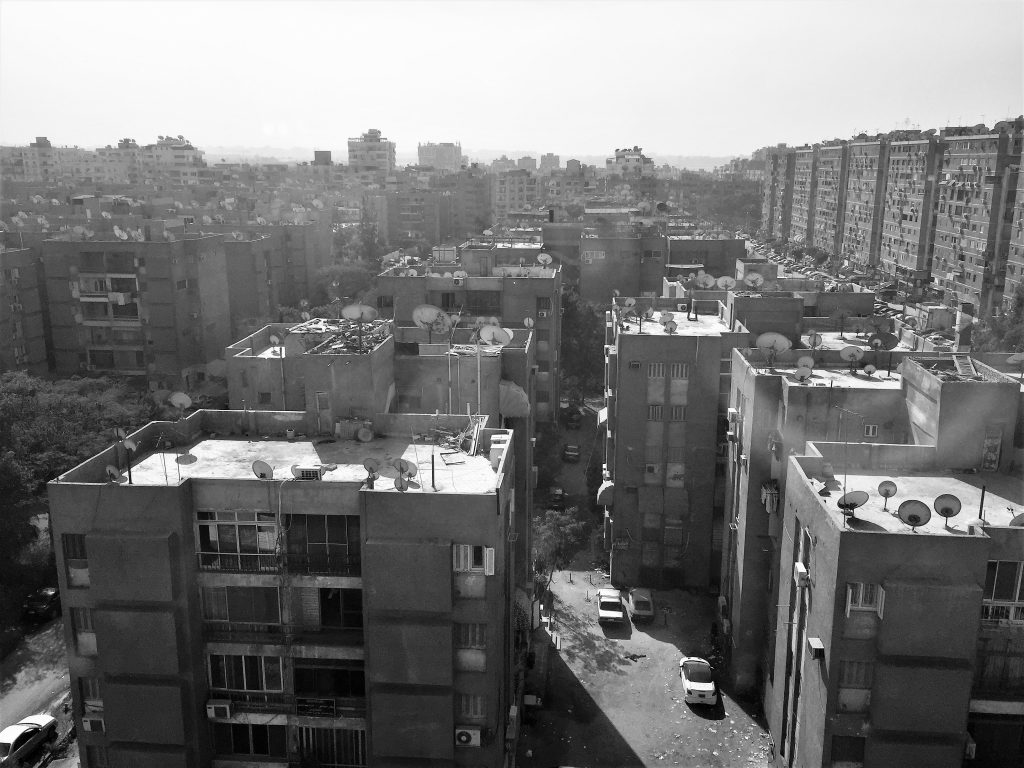Empty Buildings
The third thing I noticed on the way from the airport were the tall, dark buildings.
There are hundreds of 12-15 story buildings in parts of Cairo and Giza, and many other shorter buildings (2-5 stories) that are empty. Not just empty in the sense that they have been built and are awaiting people to move into them, but empty in the sense that the brick and concrete exoskeleton has been built, but there are no window, frames, doors, electricity or any other sign of life in them but black openings that will someday be filled with families.
I could not count the number of buildings I saw that were completely empty because there were so many. We asked our guide why there were so many empty buildings and he said because families would build these as future investments for their children. They would have the ability in the future to sell the apartments and live there themselves. This had some reason to it, I can see. You get a great job, have enough money to invest in real estate, build yourself an apartment building, but don’t have enough to finalize the investment and finish it. So you let it sit for a while.
However, we aren’t just talking about a dozen buildings or so with maybe 20-30 apartments in each. We are talking about huge buildings that could hold 200-300 apartments each in their complexes. Given the number of small and large empty buildings I saw, some areas were completely darkened for blocks and blocks in the middle of the city.
Some buildings did have people living in them on one floor in the middle of 15. A few lights, finished balconies and windows let you know that someone calls that place home. We were told that for every electric meter a building had, there was a building tax by the government, so that was why the buildings were never finished until people moved in. And having rebar sticking up on the top floor for potential expansion of the buildings means that the building may never be finished, and the owner doesn’t have to pay a tax on it.
I found a statistic online here stating, “Greater Cairo is home to 4.7 million vacant housing units, accounting for 22.7 percent of the city’s houses.” That’s a lot of empty houses, and the article continued to point out that the housing crisis is from exponential population growth and fast-paced urbanization in cities.
What I find so odd is that the government of Cairo has decided to build a “New Cairo” on the outskirts of the old, dilapidated city. The poor will be moved out to redesign the area to be a more upscale gated city. The details of the plan don’t really make much sense to me, but it will be very interesting to see if “Cairo 2050” ever happens, and if these unused buildings will ever be filled or just torn down to make way for newer ones.

